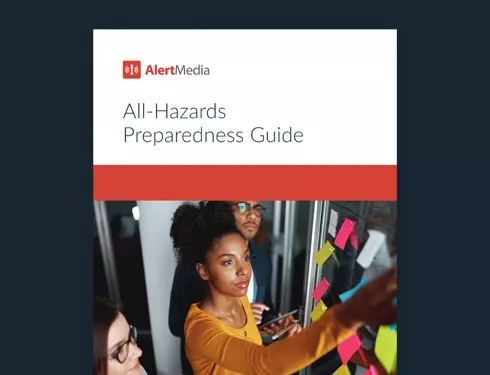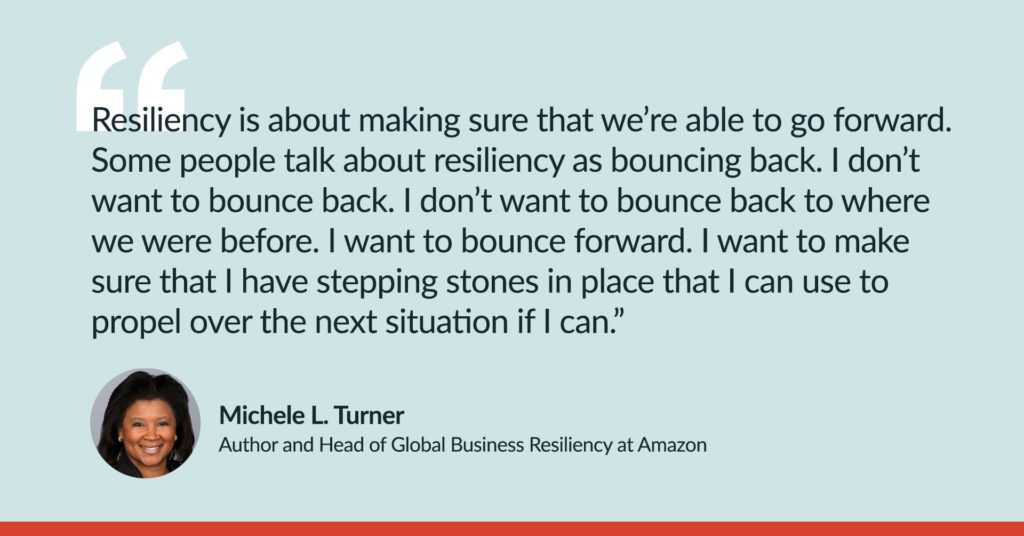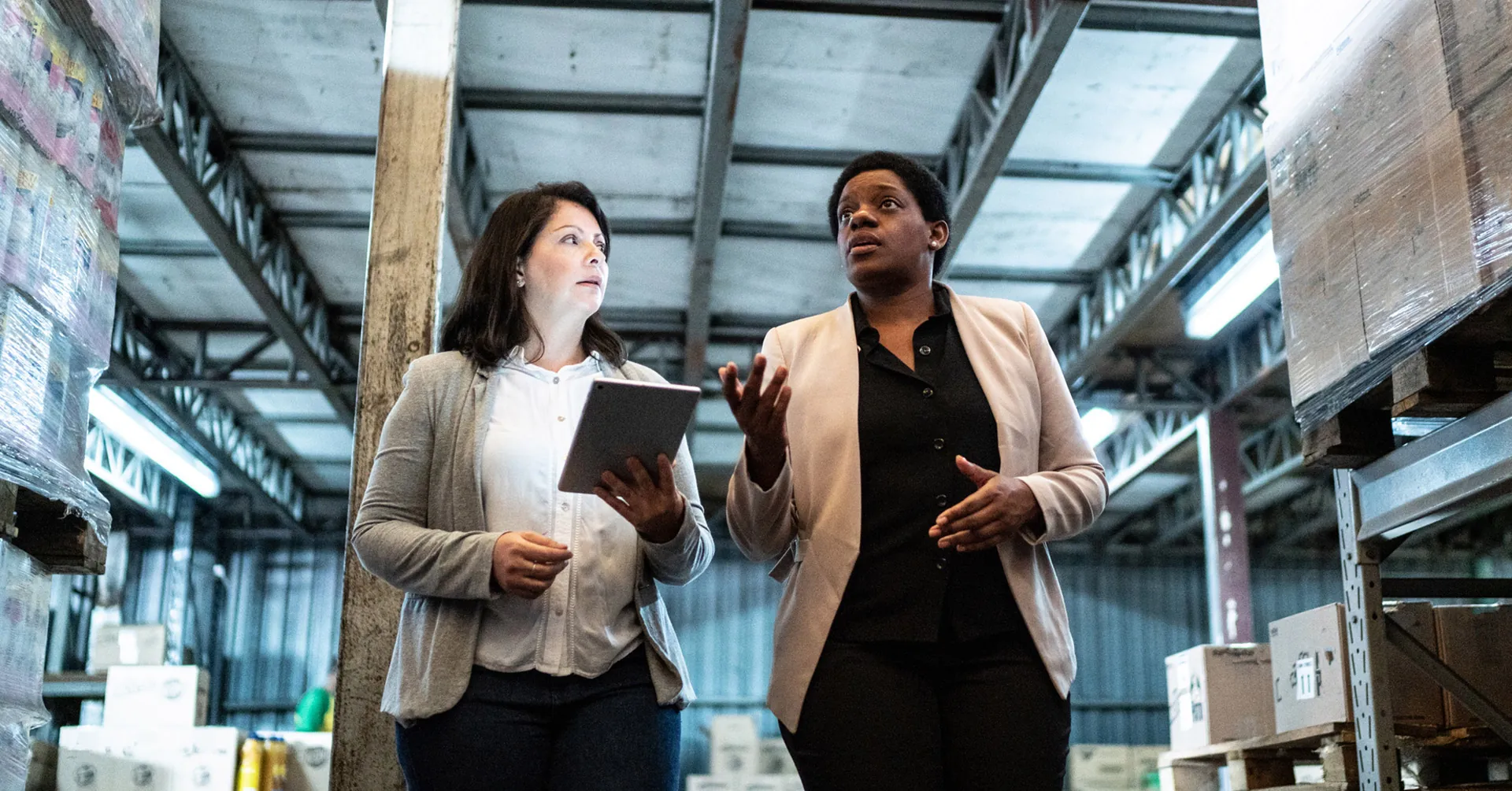
Business Resilience: Build a Stronger Organization From Start to Finish
A resilient business is one that can weather any challenges and come back stronger. But with more frequent and severe threats, organizational resilience requires more than just standard drills and emergency planning. Read on for tips to foster business resilience in your organization.

If it feels like there are more unplanned events, more emergencies, and more obstacles to running your business lately, you’re right.
Statistically, businesses are facing a greater number of threats than ever before, from more dangerous weather events to a growing rate of assault and injury from workplace violence events. Not to mention the COVID-19 pandemic, a 600 percent increase in cybersecurity attacks, and all the challenges associated with employee retention and hiring in the shifting labor market.
What we originally wrote off as unprecedented times are starting to feel like the new precedented times. And businesses that cannot be ready for these or other disruptive events are going to struggle to stay afloat.
In 2020 alone, 9.4 million businesses were forced to close, either temporarily or permanently, due to the impact of the Coronavirus pandemic. And a Mercer survey showed that more than half of surveyed businesses didn’t have a business continuity plan prior to the pandemic. They simply weren’t ready when catastrophe hit.
The right preparedness and planning, and a foundation of business resilience, can set your business up to not only weather the storms (literal and figurative) that you will face but make it through stronger and more secure than ever. This article will lay out how to make your business as flexible and hardy as possible from start to finish.
What Is Business Resilience?
Business resilience is the ability for a business to absorb and adapt to changes and work through and around any emergencies or interruptions while maintaining adequate business operations. This doesn’t mean you will avoid all risks or face no challenges, but your business will be able to recover quickly and even progress forward after an impactful event.

That sounds great, in theory, but what does it look like in practice?
When your business faces a challenge or interruption, you need to have the right risk management system in place, as well as the adaptability to perform fast-paced decision-making to protect your employees and cater to business needs.
In the case of a severe winter storm like Winter Storm Uri back in Feb 2021, organizational resilience looked like having a business continuity plan for events like power outages, water shut-offs, supply chain interruptions, and road closures. It looked like keeping facilities in good repair and fixing any vulnerabilities, as well as keeping emergency supplies like backup generators on-site. It looked like having applicable employees work from home or limiting production capacity in the short term. Most of all, it looked like mitigating the overall impact of the storm by prioritizing safety so that the already complicated storm recovery wasn’t complicated by employee injuries or massive on-site hazards.
Where disaster recovery plans might have begun and ended with the storm, business resilience continues, ensuring that your organization can navigate disruptions of all kinds. Business resilience is one of the best foundations you can give your business to survive and even thrive through all the critical events, threats, and challenges.
Planning for All Hazards
The first step to building a resilient business is ensuring that you are ready for all the different hazards that you might face. A resilient business isn’t thrown by unforeseen situations, because it has put in the preparation work and established the capabilities to handle anything, whether you’ve built a specific plan for that risk or not.
Integrating the all-hazards approach to your emergency planning means doing your due diligence in your risk assessment and building out response plans that can cover all your bases. You should integrate risk mitigation strategies to avoid certain risks and lower the overall impact of the risks you do face. Proactive preparation for future risks can also help limit the impact of disruptive incidents so that your recovery efforts are easier.
Using tools like threat intelligence systems can give you a leg up in your hazard preparation. With the right software, you’ll get real-time threat monitoring and live updates, so you can act and communicate faster. This quick action is key to staying resilient since sluggish response means significantly more time recovering from an incident.
A Foundation of Flexibility
The biggest difference between resilience and response is flexibility. Disaster response is vital to understanding exactly what to do if an emergency occurs. But what happens when that emergency changes suddenly? Or what if a system critical to your response is disabled? You need to have flexibility in your responses to adapt and change when necessary.
For example, if you normally rely on email to reach employees, make sure you have backup systems like phone calls or texts to communicate during critical events in case there are internet or power outages.
Flexibility is not just critical for emergency response efforts. It’s also important to stay flexible in how your business operates on a daily basis. If you are able to make changes on the fly, you can often keep your business running during critical events, and business disruptions aren’t nearly as … disruptive. For example, if your business has been struggling to retain workers, switching to a hybrid or remote work environment can help you attract more employees in different areas. With this flexibility, you can stay resilient during job market shifts.
Managing the Human Element
Your people can be your best assets to business resiliency or worst liabilities. Employees who don’t know what’s going on or haven’t been trained on how to respond to situations can pose a danger to themselves and others when an emergency strikes. That’s why it needs to be a top priority to include your employees in your resilience planning to get complete buy-in.
Including your employees can mean a lot of different things, such as:
- Surveying employees on their top safety concerns
- Getting up-to-date contact information from everyone
- Holding meetings explaining your business resilience efforts
- Training employees on emergency procedures like evacuations or lockdowns
- Running drills for common or high-stakes events like phishing scams or fires
- Setting guidelines and expectations for communication during emergencies
- Setting safety incentives or rewarding behavior that boosts business resilience
No matter how you factor your employees in, you want to be as clear as possible about your expectations of them, as well as how you plan to support them. Remember, business resilience helps your people as much as it does your business operations, and with the right communication, your employees will work with you to strengthen your organization.
Communication Is Key
Speaking of communication—one of the strongest foundational elements to a resilient organization is to have clear, comprehensive communication plans in place. Nobody can do their job without knowing what that job is or when they need to act. This goes for day-to-day activities as well as emergency response,o you need to have a reliable way to communicate with everyone at your company.
This kind of communication is significantly easier with a reliable mass notification system with multichannel and two-way communication capabilities. With this kind of system, you can reach everyone you need to, no matter where they are and know that your message was delivered. You can even receive direct responses to your messages, so it’s not just shouting into the void.
You should also have a way to ensure that everyone is on the same page during critical events. Displaying critical information on event pages makes it easy to get everyone in the know, so they can respond as quickly as possible. It also prevents misinformation from spreading that might hinder your recovery from an emergency. Your employees will be able to trust your leadership, and your business will be back to normal operations quickly by mitigating confusion.
Build Resilience Into Your Company Culture
All of these factors will make your business more resilient, and you’ll get the most benefit out of them if you build them into your company culture. A culture of resilience attracts better employees, clients, and customers because it signals that your business will stay strong, no matter what happens. When safety and resilience are foundational in your organization, you will be less likely to suffer major disruptions and more likely to grow stronger.




